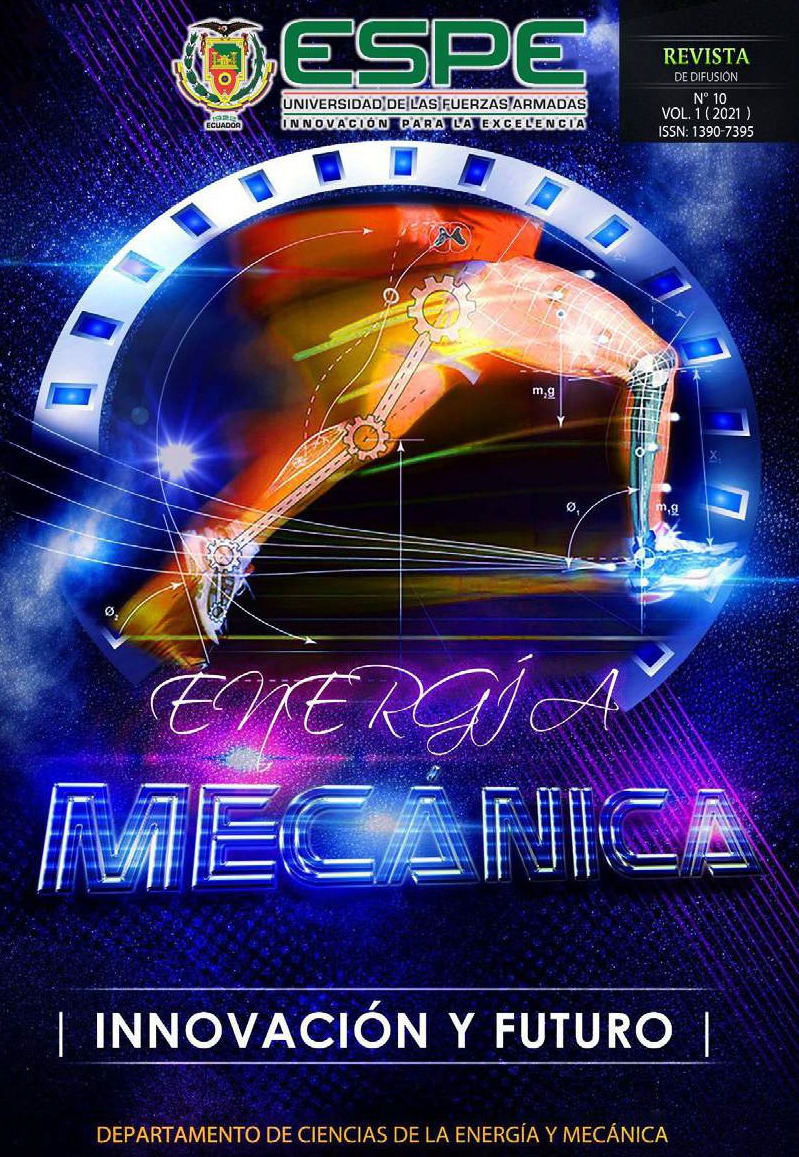ESTUDIO ANALÍTICO DEL FENÓMENO DE IMPACTO DE ALTA VELOCIDADSOBRE LAMINADOS DE TEJIDOS EMPLEADOS EN LA INDUSTRIA DE LAAUTOMOCIÓN
DOI:
https://doi.org/10.24133/EMIF.V10.4i.3875Abstract
El desarrollo de este trabajo de investigación está
motivado por la alta aplicabilidad de los laminados de
material compuesto en estructuras de diversos medios
de transporte y la industria química, ya que poseen
una alta resistencia y rigidez específica. Muchos
componentes estructurales de las aeronaves, así como
de los vehículos de automoción están fabricados con
laminados reforzados con fibras en matriz polimérica.
Con el objetivo de evaluar el comportamiento frente
a impacto de diferentes laminados con refuerzos de
fibra de vidrio o carbono, así como la influencia de
las relaciones entre el laminado y el proyectil, en
este trabajo se ha desarrollado y validado un modelo
analítico. Las diferencias para el límite balístico y la
velocidad residual entre los valores determinados a
partir de los ensayos experimentales y los estimados
con el modelo analítico son inferiores al 10% y
el límite balístico se incrementa con la relación
geométrica y con la relación de densidades.
Palabras Clave: Balístico, espesor, FRP refuerzo,
modelización
Abstract
The development of this research work is motived by
the high applicability of the laminates of composite
materials for the manufacturing of different transport
means and the chemistry industry. Many structural
components of the aircrafts and cars are made with
laminates reinforcement with fibres in polymer
matrix. With the goal, to evaluate the behaviour of
laminates reinforced glass or carbon fibres, as well
the influence of the geometric and density ratio,
between the laminate and projectile. In this work, it
was development and validated an analytical model.
The difference for the ballistic limit and residual
velocity between the experimental and analytical
results are less to 10%. The ballistic limit increases
with the geometric and density ratios.
Keywords: Ballistic, FRP reinforcement, modelling,
thickness
Referencias
[1] García-Castillo, S. K., Sánchez-Sáez, S.,
Santiuste, C., Navarro, C., & Barbero, E. (2013).
Perforation of composite laminate subjected to
dynamic loads. In Dynamic Failure of Composite
and Sandwich Structures (pp. 291-337). Springer,
Dordrecht.
[2] Naik, N. K., & Shrirao, P. (2004). Composite
structures under ballistic impact. Composite
structures, 66(1-4), 579-590.
[3] Zukas, J. A., & Scheffler, D. R. (2001). Impact
effects in multilayered plates. International
Journal of Solids and Structures, 38(19), 3321-
3328.
[4] Ulven, C., Vaidya, U. K., & Hosur, M. V.
(2003). Effect of projectile shape during ballistic
perforation of VARTM carbon/epoxy composite panels. Composite structures, 61(1-2), 143-150.
[5] Moure, M. M., García-Castillo, S. K., Sánchez-
Sáez, S., Barbero, E., & Barbero, E. J. (2018).
Matrix cracking evolution in open-hole laminates
subjected to thermo-mechanical loads. Composite
Structures, 183, 510-520.
[6] Morye, S. S., Hine, P. J., Duckett, R. A., Carr, D.
J., & Ward, I. M. (2000). Modelling of the energy
absorption by polymer composites upon ballistic
impact. Composites science and technology,
60(14), 2631-2642.
[7] Gellert, E. P., Cimpoeru, S. J., & Woodward, R. L.
(2000). A study of the effect of target thickness on
the ballistic perforation of glass-fibre-reinforced
plastic composites. International Journal of
Impact Engineering, 24(5), 445-456.
[8] López-Puente, J., Zaera, R., & Navarro, C.
(2007). An analytical model for high velocity
impacts on thin CFRPs woven laminated plates.
International Journal of solids and structures,
44(9), 2837-2851.
[9] Ivañez, I., Santiuste, C., Barbero, E., & Sanchez-
Saez, S. (2011). Numerical modelling of foamcored
sandwich plates under high-velocity
impact. Composite structures, 93(9), 2392-2399.
[10] Buitrago, B. L., García-Castillo, S. K., &
Barbero, E. (2013). Influence of shear plugging
in the energy absorbed by thin carbon-fibre
laminates subjected to high-velocity impacts.
Composites Part B: Engineering, 49, 86-92.
Downloads
Published
Issue
Section
License
Los autores que publican en esta revista están de acuerdo con los siguientes términos:
Los autores conservan los derechos de autor y garantizan a la revista el derecho de ser la primera publicación del trabajo al igual que licenciado bajo una Creative Commons Attribution License que permite a otros compartir el trabajo con un reconocimiento de la autoría del trabajo y la publicación inicial en esta revista.
Los autores pueden establecer por separado acuerdos adicionales para la distribución no exclusiva de la versión de la obra publicada en la revista (por ejemplo, situarlo en un repositorio institucional o publicarlo en un libro), con un reconocimiento de su publicación inicial en esta revista.
Se permite y se anima a los autores a difundir sus trabajos electrónicamente (por ejemplo, en repositorios institucionales o en su propio sitio web) antes y durante el proceso de envío, ya que puede dar lugar a intercambios productivos, así como a una citación más temprana y mayor de los trabajos publicados.

